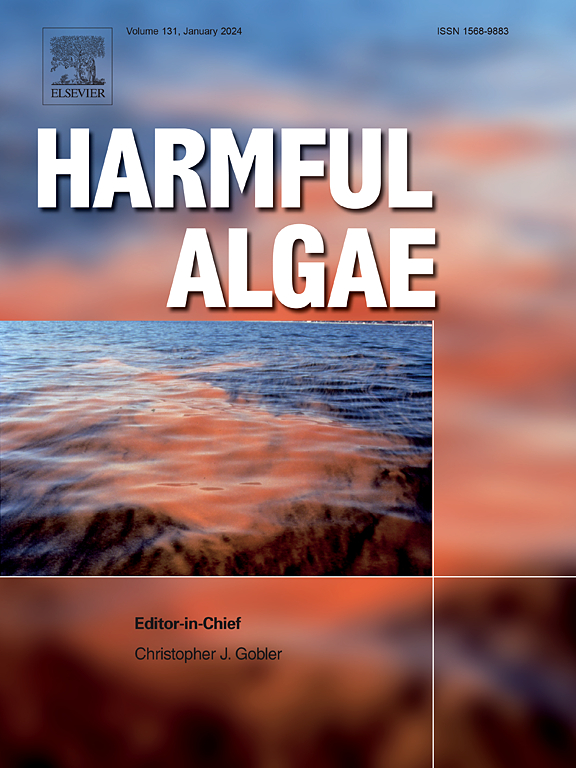沿海城市雨水塘网中底栖蓝藻的积累和相关的蓝藻毒素
IF 4.5
1区 生物学
Q1 MARINE & FRESHWATER BIOLOGY
引用次数: 0
摘要
2021年夏末,在佛罗里达州西北部沿海城市雨水截留池网络中观察到大量以蓝藻为主的席子。这种池塘在整个地区的居民社区中很常见,人类、家畜和野生动物可能会经常光顾,并且通常含有各种水生生物。为了开始研究环境因素与垫特征之间的相关性,我们研究了这些网络的时间异质性,涉及到在整个秋季在网络内的几个地点存在潜在毒性蓝藻、相关毒素和其他假定的蓝藻化合物。在全水和被动SPATT样本中使用目标分析检测到多种毒素类别,包括超过国家娱乐指南的圆柱形精子蛋白酶水平。非靶向分析还揭示了一系列潜在的蓝藻相关化合物。我们的研究结果表明,底栖生物的繁殖可能,至少在一定程度上,与雨水处理网络的预期功能有关,即营养物质和沉积物的去除。此外,这些截留池可能成为河口水域中蓝藻毒素的偶然来源。本文章由计算机程序翻译,如有差异,请以英文原文为准。
Benthic cyanobacterial accumulations and associated cyanotoxins in coastal urban stormwater pond networks
Extensive cyanobacteria-dominated mats were observed during late summer of 2021 within coastal urban stormwater retention pond networks in northwest Florida. Common in residential communities across the region, such ponds may be routinely visited by humans, domestic and wild animals, and often contain a variety of aquatic life. To begin examining correlations between environmental factors and mat characteristics, we investigated the temporal heterogeneity of these networks with regards to presence of potentially toxic cyanobacteria, associated toxins, and other putative cyanobacterial compounds throughout the fall at several sites within the networks. Multiple toxin classes were detected in whole water and passive SPATT samples using targeted analysis including levels of cylindrospermopsin that exceeded national recreational guidelines. Non-targeted analysis also revealed a collection of potential cyanobacteria-associated compounds. Our results suggest that the benthic proliferations may be, at least in part, correlated with the intended functions of the stormwater treatment networks, which are nutrient and sediment removal. Furthermore, these retention ponds may serve as an episodic source of cyanotoxins to estuarine waters.
求助全文
通过发布文献求助,成功后即可免费获取论文全文。
去求助
来源期刊

Harmful Algae
生物-海洋与淡水生物学
CiteScore
12.50
自引率
15.20%
发文量
122
审稿时长
7.5 months
期刊介绍:
This journal provides a forum to promote knowledge of harmful microalgae and macroalgae, including cyanobacteria, as well as monitoring, management and control of these organisms.
 求助内容:
求助内容: 应助结果提醒方式:
应助结果提醒方式:


